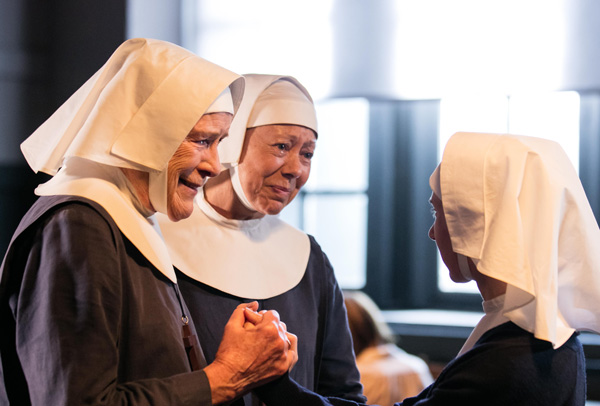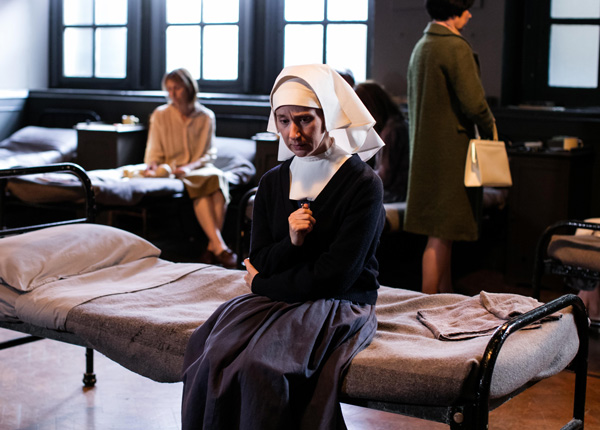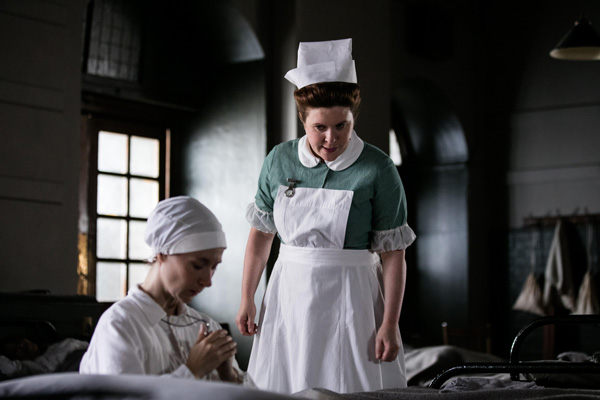Viewers have continuously spoken about how episodes of Call The Midwife have helped to raise awareness of serious issues, and have helped them to understand more about the topics being covered.

Here are five difficult storylines that were beautifully depicted:
1. The tuberculosis storyline throughout season two
In the 20th century, the disease tuberculosis was sometimes considered a serious cause for concern – and Call the Midwife made efforts to track the evolution of the disease throughout its second season.
In episode six, Dr Turner announced that Poplar was undergoing an epidemic of the disease. Midwife and nurse Jenny, played by Jessica Raine, also visited a man who had lost his entire family to the disease.
Sister Bernadette (now no longer a nun), also struggled with the illness, and it was a storyline about a potentially terrifying disease that had an emotional impact on viewers.
2. The revisiting of the thalidomide storyline in season six, episode six

In a recent episode of Call the Midwife, the show caught up with a family from season five, the Mullocks, whose adorable baby girl Susan was born without her limbs after taking thalidomide.
In the original episodes from season five, viewers watched heart-breaking scenes as the family feared she may not make it through the night after being born.
Now, little Susan is 18 months old, and the family returned to Dr Turner for help in fitting her with prosthetic limbs before enrolling her in nursery school.
The episode made for emotional viewing, with the father clearly struggling to come to terms with the reality of his daughter’s future.
3. The story of the woman who had been a victim of FGM in season six, episode five
In another season six episode, the drama tackled the very real issue of Female Genital Mutilation, by focusing on the story of one lady from Somalia, who had been circumcised as a child.
The lady was pregnant, but incredibly fearful of giving birth due to the procedure she’d been forced to have as a child.
Viewers were astounded at the emotional and hard-hitting viewing – which covered the important and very real issue of FGM in a sensitive and careful way.
4. Sister Mary Cynthia’s mental health storyline throughout season five and six

One of the younger nuns at Nonnatus House has had one of the most complex storylines of the whole six seasons.
Sister Mary Cynthia’s struggle with her mental health is a perfect example of how the BBC One programme has thoughtfully covered the changing attitudes towards mental illness in the mid-20th century.
Towards the end of season five, the nun is violently assaulted by a man in Poplar. Sister Mary ends up in a downward spiral as a result of the attack, which eventually sees her being sent off to Linchmore Hospital – a frightening and archaic mental institution.
Eventually, Sister Mary is placed into a friendlier, more sympathetic institution called Northfields.
Call the Midwife writer Heidi Thomas said that she keen to cover the issue, saying “I have a very personal interest in all aspects of mental health, as I grew up with a brother with learning difficulties and my family has been impacted by suicide.”
5. The Spina Bifida plot in season two, episode four
Back in the second season of the show, one episode focused on the story of a young couple, Ruby and Douglas.
They had given birth to a son who was sadly born with the birth defect spina bifida, which is where the backbone is not completely closed around the spinal cord.
The baby’s parents struggle to come to terms with the diagnosis initially, and even the midwives and nuns at Nonnatus House seem to think that the child is beyond hope.
But the episode ended positively. At the time, spina bifida was considered somewhat of a death sentence. But treatments were breaking through in the 50’s, and this episode perfectly displayed the changing attitudes towards it over the century.
Article credit: womanandhome.com

